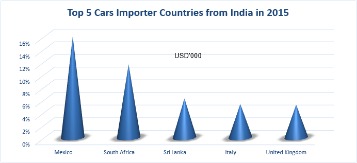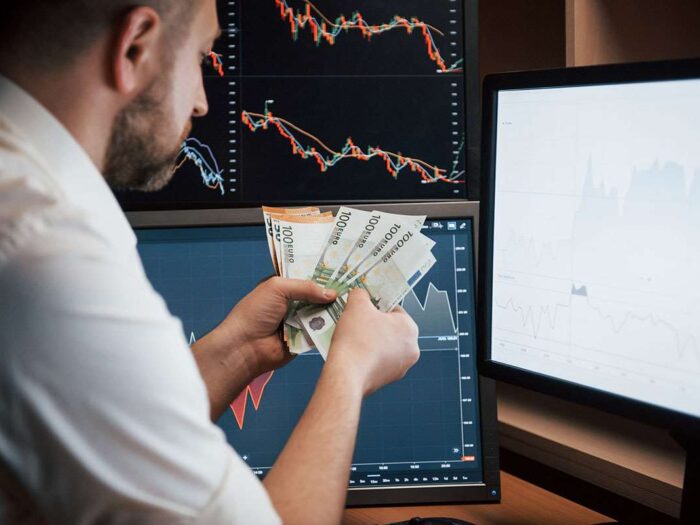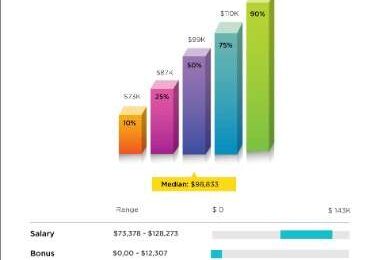
Confidence is high, and can be infectious, which can have the effect of propelling a bull market even further. “Bearish” sentiment in crypto investing not only means the newbies and paper hands are long gone, but even the die-hard HODLers are starting to sweat. A bear market is characterized by a general lack of investor confidence and a pessimistic attitude about asset prices. Prices plummet as demand slips, and once-popular coins or projects can become virtual ghost towns as their user base hibernates for the downturn. You’ll often hear terms like “bull” and “bear” thrown around in various contexts to describe the state of financial markets.

Rising GDP denotes a bull market, while falling GDP correlates with bear markets. GDP increases when companies’ revenues are increasing and employee pay is rising, which enables increased consumer spending. GDP decreases when companies’ sales are sluggish and wages are stagnant or declining.
FactorsBull PhaseBear Phase Economy pricesStocks can give higher returns for the higher risk they entail. Equity investment returns are good during this time.Preserving capital and stable income becomes important. So, less risky investments like bank fixed deposits, gold investments and government bonds are sought. InflationDue to increased demand, the production pace continues to grow and proves to be encouraging for wholesalers. Wages rise and suppliers demand higher prices.Demand shrinks or remains steady as only essentials are required.
We do not offer financial advice, advisory or brokerage services, nor do we recommend or advise individuals or to buy or sell particular stocks or securities. Performance information may have changed since the time of publication. Yet sometimes the markets can behave differently from the larger trends. This is observed when we are investing in direct equity while choosing a stock. In a bearish trend there could be signs of bullish phases and vice versa. Whether a market is bullish or bearish depends not just on the market’s knee-jerk reaction to a particular event, but how it’s performing over the long term.
A https://topforexnews.org/ market is a trend that leaves investors feeling pessimistic about the future outlook of financial markets. The longest U.S. bear market was 61 months, from March 10, 1937, to April 28, 1942. The most severe bear market chopped 86% from the market’s value; it extended from Sept. 3, 1929 to July 8, 1932. During a Bear Market, investor confidence is very low, and usually, the economy witnesses a large sell-off of stocks.
- The last phase indicates the further downfall of stock prices but at a slower pace.
- By defining your goals, you can make investment decisions based on them.
- It’s important to note that although a broad market index may enter a bear market, certain assets may see increased demand as investors seek protection.
- When people use the term ”bull market”, they are usually taking about the stock market; however, a bull market can refer to any item that can be traded, such as real estate, currencies, or bonds.
- The origins of “bull” and “bear” as financial terms aren’t entirely clear, but there is a consensus among etymologists that “bear” came first.
However, some investors who have been holding assets for a while might consider selling during this time to lock in their gains. Both terms refer to a mindset and personality type of an investor. Some are generally more optimistic in life while others tend to have a pessimistic personality. This often results in a permanent bullish or bearish stance towards an asset or a market. The expression “bull market” is thought to originate from the upward motion a bull’s horns make as it charges and attacks. In a crypto bull run, prices are surging, exuberance is high and the direction of the arrow on price charts is pointing up .
Investor responses to bull market vs. bear market cycles
The imagery of a bull-rushing symbolizes the effect a general rise in stock markets has on investors. Confidence is high and investors “rush” into the market to buy stocks. Crypto winter is a term that was used to describe the situation during the bear market of 2018 and 2019. High hopes of investors were disappointed time and time again until the market was almost freezing on low liquidity and volume finally finding its bottom. The term is still in use to describe a situation where investors expect the crypto market to go through very difficult times.
Employment, GDP and the number of initial public offerings will rise. The economy is strong and consumption & investment levels are high. On the other hand, bear markets are characterised by economic contraction, lay-offs and falling levels of investments & GDP.
As your portfolio ages, you shouldn’t just leave it completely alone. This entails bringing your portfolio’s complexing back to your intended asset allocation. The necessity from this is derived from returns affecting your portfolio over time. Regardless of the current market we’re in, the standards of strong portfolios remain constant. The first thing you should have in order when it comes to investing is your ultimate financial goals. For most Americans, this principally includes retirement, along with vacations, buying a home and more.

A bull market is a market that is on the rise and is economically sound, while a bear market is a market that is receding, where most stocks are declining in value. The South Sea Bubble gets its name from the South Sea Company, founded in 1711 to trade with Spain’s colonies in the New World. South Sea stock became highly desirable when the king became governor of the company, and soon stockholders were enjoying returns of up to 100 percent. In 1720, the company assumed most of the British national debt and convinced its investors to give up state annuities for company stock, which was sold at a very high premium.
Unemployment rate changes
A bear market, on the other hand, is believed to be so named for the downward motion a bear makes with its claws while striking. Another leading theory on the term’s origin dates back to a 16th century proverb admonishing, “don’t sell the bearskin before you’ve caught the bear”. By early 18th-century England, the term “bearskin” was used as shorthand for speculative stock buying, which we call short-selling today.

The Bull Market definition refers to a general rise in prices of stocks in the U.S. stock market. The Bull Market meaning in stock market trading can be very broad but usually is used during a long period of time where the stock market value overall is rising. Market cycles in crypto are either following a strong bullish or bearish trend and in both cases come with high volatility.
Is crypto in a bear market right now?
When stock prices are rising and optimism abounds, how do you decide where to invest your money? Many investors are willing to take on more risk in a bull market, but you may want to think carefully about your personal risk profile and have a long-term strategy in mind. Whether the market is going through a Bullish or a Bearish market scenario is not in the hands of an individual or a single factor but large scale factors and other macroeconomic situations. Every investor has to go through such phases since these situations are inseparable. In statistical terms, the market is bullish when a rise of 20% in the stock market’s performance is observed. On the contrary, if a downfall of the stock market of 20% or more is noticed, then a bearish market situation is highlighted.

There is a https://forex-trend.net/ correlation between the Bitcoin halving and these cycles. While each halving has been followed by a bull market so far, a strong bear market has been the result after each new all-time high. A year like 2021 probably won’t come around again anytime soon, when you could pretty much throw a dart at a list of investable assets and most likely turn a profit. However, there will certainly be more bull markets in our future. If optimism is the currency of a bull market, fear is the legal tender in a bear market.
During times of economic contraction and bear markets, the unemployment rate usually rises. Conversely, it typically decreases as the economy expands during bull markets. For example, the financial markets may still see volatility in prices on their road to recovery from a recent bearish period. This could make it difficult to pinpoint the shift in investor sentiment. As with bull markets, bear markets have a definition that may vary depending on whom you ask. Securities and Exchange Commission is a period when stock prices decline and the markets have a pessimistic sentiment.
As a matter of fact, some of the largest up days in history have occurred in during bear market cycles. After a prolonged bull market, investors have been conditioned to “buy the dip.” After a sharp decline, “dip” buyers step in and the market starts to rise a bit. This initial rally then encourages other investors who think the worst is over and become fearful of missing out—creating a cycle of yet more buying.
It is generally said that as markets scale up over time, without falling for more than 20% from its previous 52-week peak, it is considered as a bull market. Similarly, the term bear market is applied to the market condition when it is expected to fall, or it falls broadly by 20% from its peak. A bear market occurs when prices are falling, or when they’re expected to decrease.
The money in a custodial account is the property of the minor. FMCGFast-moving consumer goods are non-durable consumer goods that sell like hotcakes as they usually come with a low price and high usability. Their examples include toothpaste, ready-to-make food, soap, cookie, notebook, chocolate, etc. Though one with a pessimistic opinion is called someone with a ‘bearish outlook,’ many anticipate such a situation as temporary and indications of the revival stage being around the corner. When you open a new, eligible Fidelity account with $50 or more.
Economic output is the total value of goods produced and services provided by a country and is also known as gross domestic product, or GDP. The term bear market most likely came from both parable and practice. It generally relates to the trade of bear skins during the 18th century. During this era fur traders would, on occasion, sell the skin of a bear which they had not caught yet. They did this as an early form of short selling, trading in a commodity they did not own in the hopes that the market price for that commodity would dip.
A https://en.forexbrokerslist.site/ market exists in an economy that is receding and where most stocks are declining in value. Because the financial markets are greatly influenced by investors’ attitudes, these terms also denote how investors feel about the market and the ensuing economic trends. In a bullish market, the liquidity flowing in the market is vast, and investors continue to pump more funds with increased trading activity and invest in stocks, gold, real estate, etc. Still, the liquidity dries up in the system in a bearish market, and investors are reluctant before making any commitments. The investments made during a bullish scenario are either sold, preventing further downsides, or holding back to them for future usage. If many securities find themselves in a bull market, it usually signals the beginning of an economic expansion or contraction respectively.
Bear Market investing is a lot riskier and investors have to take riskier options if they want to see an increase in their portfolio. Investors’ psychology and stock market performance are also mutually dependent. In a bull market, the increase in stock market prices boosts investor confidence, which causes investors to put their money in the market in the hope of obtaining a profit. A declining unemployment rate is consistent with a bull market, while a rising unemployment rate occurs during bear markets. During bull markets, businesses are expanding and hiring, but they may be forced to lower their head counts during bear markets.
Both animals are known for their incredible and unpredictable strength, so the image that each evokes in regards to stock market volatility certainly rings true. In the first phase, Investor sentiment and prices of securities are very high, but the investors are extracting maximum profits and exiting the market. It provides a platform for sellers and buyers to interact and trade at a price determined by market forces. All that said, most investors can’t predict exactly when a bull market will flip to a bear market and vice versa.












